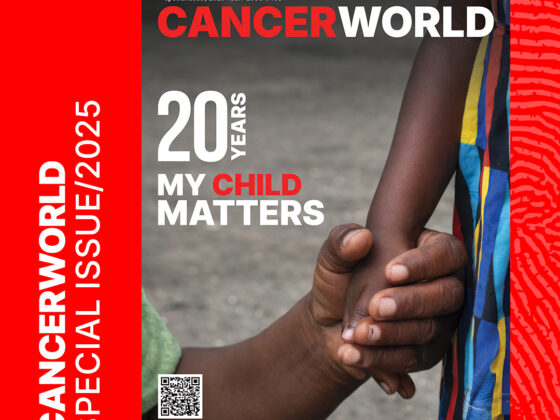Patients with germline BRCA gene mutations and a history of early-onset breast cancer who underwent risk-reducing bilateral mastectomy and/or a risk-reducing salpingo-oophorectomy had lower rates of death than those not undergoing these procedures. The study, presented at the 2024 San Antonio Breast Cancer Symposium (SABCS), held December 10–13, Abstract GS1-08, found that patients who underwent risk-reducing mastectomy had a 35% lower risk of death and that patients who underwent risk-reducing salpingo-oophorectomy had a 42% lower risk of death.
“This global study provides the first evidence that risk-reducing surgeries improve survival outcomes among young BRCA-mutation carriers with a prior history of early-onset breast cancer,” said study presenter Matteo Lambertini, from the University of Genova-IRCCS Policlinico San Martino Hospital, Genoa, Italy. “We believe that our findings are critical for improving the counselling of BRCA-mutation carriers with early-onset breast cancer on cancer-risk management strategies.”
In carriers of harmful BRCA1 and BRCA2 mutations, risk-reducing salpingo-oophorectomy has been shown to improve overall survival, and bilateral risk-reducing mastectomy has been shown to reduce the risk of developing breast cancer, but to have no proven benefit on overall survival. There has, however, been very limited evidence of the benefits of risk-reducing salpingo-oophorectomy and bilateral risk-reducing mastectomy in BRCA carriers with a prior breast cancer diagnosis at a young age.
The retrospective study analysed data from 5,290 patients who, between 2000 and 2020, had been diagnosed with stage I to III invasive breast cancer at 40 years of age or younger. Among the cohort, who were recruited from 109 institutions across five continents, 3,888 underwent at least one risk-reducing procedure, with 2,910 patients receiving bilateral mastectomy, 2,782 salpingo-oophorectomy, and 1,804 both surgeries. The remaining 1,402 patients did not undergo either surgical procedure. The median time from diagnosis to bilateral mastectomy was 0.8 years and to salpingo-oophorectomy was 3 years, with a median follow-up of 5.1 years after bilateral mastectomy and 4.9 years after salpingo-oophorectomy.
Of the patients, 51.5% had node-negative and 45.8% hormone receptor positive breast cancer, with a median age at breast cancer diagnosis of 35 years.
Results for the primary endpoint showed that risk-reducing mastectomy was associated with a significantly reduced risk of death (adjusted hazard ratio [aHR]=0.64, 95%CI 0.53–0.78). The association was observed regardless of the specific BRCA mutation, age at diagnosis, tumour subtype, tumour size, or nodal status.
Risk-reducing salpingo-oophorectomy was also associated with a significantly reduced risk of death (aHR=0.58, 95%CI 0.47–0.70). The association was observed regardless of age at diagnosis, tumour size or nodal status. Notably, higher risk reductions were observed for BRCA1 carriers than BRCA2 carriers (aHR=0.44 for BRCA1 vs 0.85 for BRCA2). Additionally, higher risk reductions were observed for patients with triple negative breast cancers than hormone receptor positive breast cancers (aHR=0.44 for triple negative vs 0.80 for hormone receptor positive).
Risk-reducing mastectomy reduced the risks of disease free survival events (aHR=0.58, 95%CI 0.52–0.65) and breast cancer free interval survival events (aHR=0.55, 95%CI 0.48–0.62).
Risk-reducing salpingo-oophorectomy reduced the risks of disease free survival events (aHR=0.68, 95%CI 0.61–0.77) and breast cancer free interval events (aHR=0.65, 95%CI 0.57–0.74).
Limitations of the study include its retrospective design and the inclusion of patients from different healthcare systems with different resources and guidelines.
While the results of the study may help to improve counselling on cancer risk management strategies for BRCA carriers with young-onset breast cancer, said Lambertini, they should not be used to counsel BRCA-mutation carriers who are healthy, or BRCA-mutation carriers diagnosed with breast cancer at an older age. He also highlighted the critical need for healthcare providers to weigh the risks and benefits of the procedures, as they can lead to infertility and early menopause.












